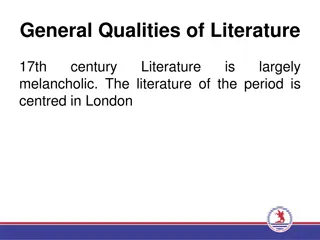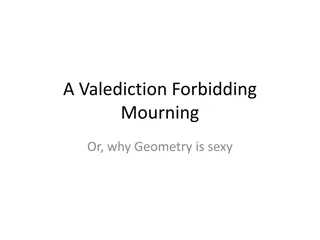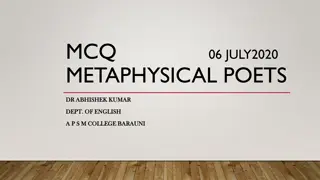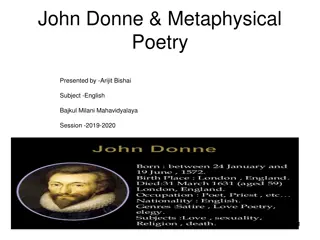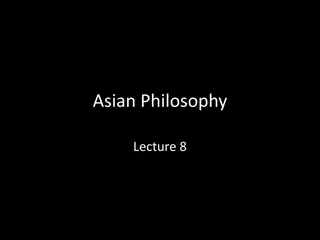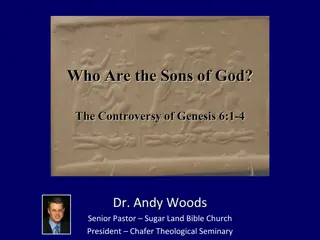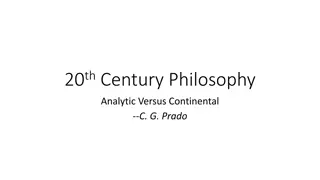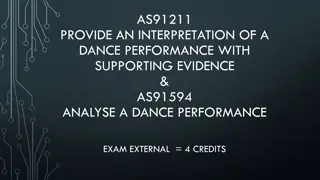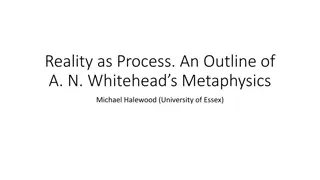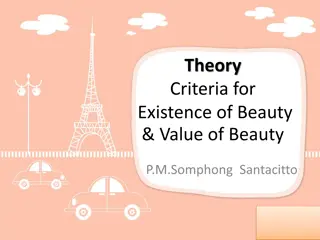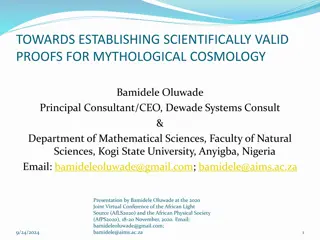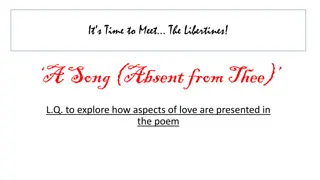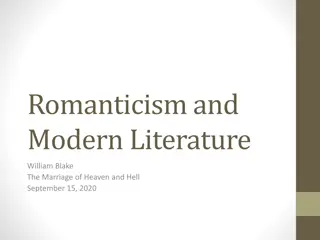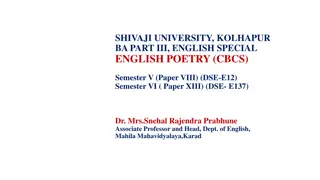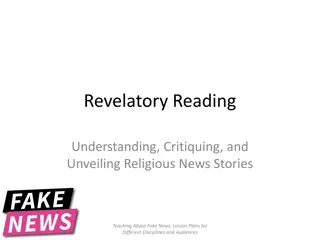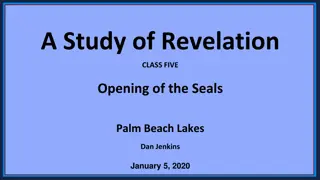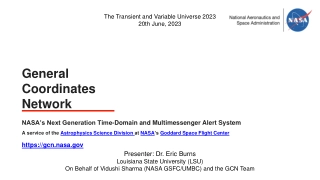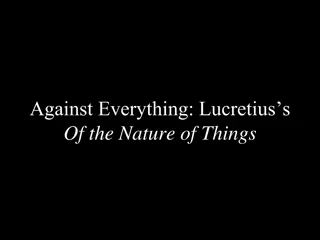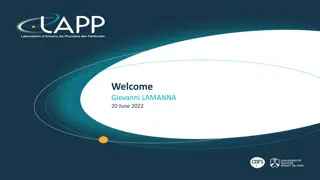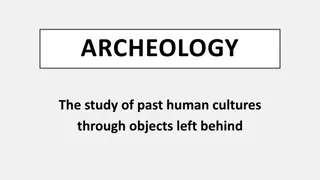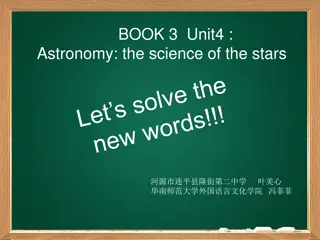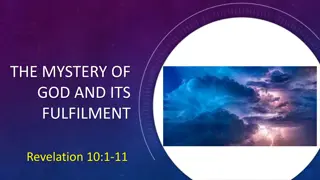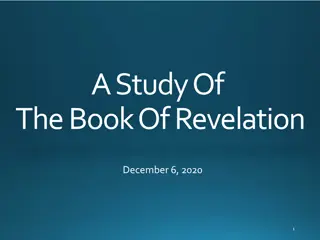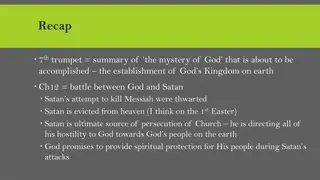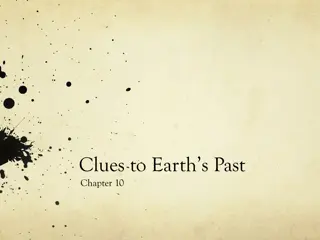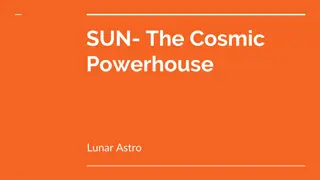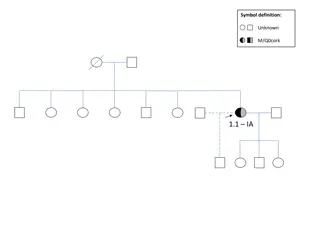Unveiling the Mysteries of the Æther: A Metaphysical Perspective
A philosophical framework, the Æther seeks to provide a foundational understanding for interpreting "electromagnetic" phenomena. Postulated as an energetic, metaphysical background, it is considered a medium or substrate facilitating these phenomena. This proposed concept delves into the realm of pure existence, aiming to shed light on the intricate workings of the universe.
Download Presentation

Please find below an Image/Link to download the presentation.
The content on the website is provided AS IS for your information and personal use only. It may not be sold, licensed, or shared on other websites without obtaining consent from the author. Download presentation by click this link. If you encounter any issues during the download, it is possible that the publisher has removed the file from their server.
E N D
Presentation Transcript
What is the ther? The ther is a proposed logical foundation of interpretation, it is a philosophical framework. ther is postulated to be an energetic, metaphysical background that acts as a medium or substrate for electromagnetic phenomena. more specifically, it is pure potential that acts as the essence of all field modalities. Put another way, it is what comprises all fields. ther is proposed as non-cartesian counter spatial inertia. thus, the ther Is absolute and is not amenable to ordinary measurement. ther acts as the medium in which the phenomena of light, electrical actions at a distance, and propagation takes place. The ther is immaterial, thus intrinsically cannot be scienced, nor is it quantifiable.
Defining of terms as applied Metaphysical transcending physical matter, beyond the physical material world. Background The area or scenery behind the main object of contemplation (the material world), especially perceived as a framework for it. Medium THE background frame THAT MAKES POSSIBLE THE TRANSFER OF ENERGY FROM ONE LOCATION TO ANOTHER, ESPECIALLY THROUGH WAVES. Substrate an underlying substance or layer counterspace non-dimensional theric realm Pure potential unmanifest energy, homeostasis in counterspace
Critique The ther falls outside of the scope of scientific verification and validation, thus cannot be proven. Natural science is the study of the natural world, thus claims pertaining to the natural world should adhere to the parameters of natural science by way of the scientific method and scientific experimentation. There are 3 constituent parts of a scientific experiment: dependent, independent, and control variables. You first must observe a naturally occurring phenomena, (dependent variable). Secondly, you propose a cause-and- effect relationship test (hypothesis). lastly, you manipulate the presumed cause (independent variable) to validate it is in fact the cause of the observed effect. The ther is postulated to be immaterial, therefore intrinsically cannot meet these requirements.
Atomism vs. ther There are two fundamental frameworks that have ever been proposed to interpret phenomena within the natural world: atomism and the ther. Prior to any attempt to understand the natural world, one must first determine a foundational framework of interpretation. This inevitability confines us to a philosophical determination at the onset of our pursuit to understand the natural world. Quantification is not science. Rather is merely a description. Math describes, science explains. In order to explain phenomena, we must first apply a framework of interpretation. Two options sit before us: atomism/ ther.
Atomism Atomism a theoretical approach that regards something as interpretable through analysis into distinct, separable, and independent elementary components, a doctrine that the physical or physical and mental universe is composed of simple indivisible minute particles. Atomism is, by definition, philosophy. Atomism is birthed from the perceived necessity to quantify all things, thus the need for quantification dictates an atomistic application. Simply put, everything must be a particle, or it cannot be counted. Atomism is proposed as a philosophical framework to interpret the natural world, thus the same critique previously covered can be equally applied. Further, Atomism is a philosophy confined to a materialistic need for quantification.
Materialism MATERIALISM a theory that physical matter is the only or fundamental reality and that all being, processes and phenomena can be explained as manifestations or results of matter. Implication of the Claim: if something is not physically manifest within the material world then it does not exist. this framework is logically bankrupt on its face, for obvious reasons. Examples to the contrary: intuition, memory, dreams, consciousness, and of course, the creator, to name a few. Due to the inevitability of the metaphysical alone, this philosophy holds no logical viability whatsoever.
Democritus Democritus was a prominent figure in atomic theory. He theorized that all material is made up of atoms. He said that atoms were so small that they could not be reduced to anything else. He theorized that the universe is made up of the space with atoms, or the Being, and the vacuum that is absent of atoms. He called this empty space the void. He pictured atoms as mostly homogeneous. He thought the reason things look different and feel different to us is because they are made up of different configurations and combinations of atoms. He theorized that because everything is made of these infinite atoms nothing really dies. Everything just changes form. This idea is very similar to the popular concept of today that matter cannot be created or destroyed
Democritus theorized that motion has always existed. He said that the universe began with atoms moving in all directions. Then, the atoms began to collide with similar atoms to form larger entities. Democritus did not believe the universe formed because of a purpose. He only believed it happened because of necessity. He theorized that the Void and the Being were infinite and expanded in all directions. He also believed that there had to be infinite other worlds that consisted of atoms. - https://projects.iq.harvard.edu/predictionx/democrites Atomism was initially proposed by Democritus, a famous Greek philosopher. Again, atomism is, at is base, philosophy.
Atomic theory Atomic theory is the theory that all matter is made up of tiny indivisible particles. According to the modern version, the atoms of each element are effectively identical, but differ from those of other elements, and unite to form compounds in fixed proportions. atoms are claimed to be 99.99999% empty space. atoms do not have well defined boundaries, it is claimed that atoms are more like clouds consisting of distributions of electrons, neutrons and protons. atoms are not directly observed. we use electric manipulation and motion sensors to recreate images of the alleged atom . The model of the atom has never been scientifically proven. it is merely an abstract conceptualization utilized for descriptive and quantitative purposes.
DISCLAIMER This is not as if to claim that the phenomena referred to as the atom is not a real phenomena. The proper defining of atomic theory is established to elucidate the presupposition that everything is comprised of particles. It is not the phenomena that is in contention, rather the interpretation. Atomism, in its purest form, is materialism.
Quantum mechanics Quantum Mechanics the branch of mechanics that deals with the mathematical description of the motion and interaction of subatomic particles , incorporating the concepts of quantization of energy, wave-particle duality, the uncertainty principle and the correspondence principle. Quantum Mechanics is simply the imposed interpretation of atomism on the smallest scale . QM is in intrinsically built upon the reification of atomic theory and subatomic particles. For obvious reasons. Without a model comprised of discrete particles, quantification could not be carried out as is currently done. The wavefunction represents the probability amplitude for finding a particle at a given point at a given time in space.
Subatomic particles Reification fallacy when an abstraction (abstract belief or hypothetical construct) is treated as if it were a concrete real event or physical entity. One must first reify atomic theory prior to making further claims about the composition of an atom. A subatomic particle is postulated as a particle that composes an atom. According to the standard model of particle physics, a subatomic particle can be either a composite particle, which is composed of other particles, or an elementary particle, which is not composed of other particles. There are 3 primary subatomic particles that are claimed to compose an atom: the proton, neutron, and electron.
electron As previously covered, the atom has never been directly observed and is claimed to be 99.99999% empty space. The electron is speculated to be about 100 million times smaller than the atom. In fact, it is frequently claimed electrons have no size, rather are point particles that have no specific shape nor volume. However, it is simultaneously claimed that the electron is matter. J.j. Thomson is accredited with the discovery of the electron using cathode ray tubes, allegedly establishing that all atoms contain tiny negatively charged subatomic particles. The electron is claimed to be a charge carrying particle. there is no such thing as positive and negative charge, there is only charge and discharge. This is, once again, a conceptual convention for the purpose of quantification.
It is also claimed that an electron is a quantum object with wave-like properties, so it must always be vibrating at some frequency. It is claimed that until someone or something actually attempts to look at it, the precise location of the electron is uncertain. The uncertainty of location is part of the model for the electron and one can only calculate the probability of finding an electron within a certain space. Electrons are claimed to be clouds of negative charge density that shift and move with time. Quantum mechanics claims that an electron can be viewed as a stationary wave or cloud of negative charge. the reification of these abstractions allow for a calculative description of the amount of negative charge at any given point within this cloud.
To account for its apparently small mass, science conceives of the electron as a hollow sphere, a sort of bubble, such a bubble could exist in a medium as a gas or liquid because its internal pressure is not altered by deformation. But if, as supposed, the internal pressure of an electron is due to the repulsion of electric masses, the slightest conceivable deformation must result in the destruction of the bubble! Just to mention another improbability... - Nikola Tesla My ideas regarding the electron are at variance with those generally entertained. I hold that it is a relatively large entity carrying a surface charge and is not an elementary unit (particle). When the electron leaves an electrode of high potential and in a high vacuum it carries an electrostatic charge many times greater than normal. Nikola Tesla
J.j. Thomson originally stated the electron is nothing more than the terminal end of one unit line of dielectric induction. Unfortunately to a large extent in dealing with dielectric fields the prehistoric conception of the electro-static charge, the electron , on the conductor still exists, and by its use destroys the analogy between the two components of the electric field, the magnetic and dielectric. This makes the consideration of dielectric fields unnecessarily complicated - C.P. Steinmetz (Electric Discharges, Waves and Impulses) To describe an electron as a negatively charged body is equivalent to saying that it is an expanding- contracting particle. There is no such condition in nature as a negative charge, nor are there negatively charged particles. Charge and discharge are opposite conditions, as filling and emptying, or compressing and expanding are opposite conditions. W. Russell
Thomson developed the Ether Atom ideas of M. Faraday into his Electronic Corpuscle , this indivisible unit. One corpuscle terminates on one Faradic tube of force, and this quantifies as one Coulomb. This corpuscle is not and electron, it is a constituent of what today is known incorrectly as an electron . (Thomson relates 1000 corpuscles per electron) In this view, that taken by W. Crookes, J.J. Thomson, and N. Tesla, the cathode ray is not electrons, but in actuality corpuscles of the Ether. E. Dollard There is no rest mass to an electron . It is given here the electron is no more than a broken loose hold fast under the grip of the tensions within the dielectric lines of force. They are the broken ends of the split in half package of spaghetti. Obviously, this reasoning is not welcome in the realm of Einstein s Theory of Relativity. E. Dollard
Electrons as a separate, distinct entitydoesnt really exist, they are merely bumps in something called a field . - Dr. Steve Biller electrons are not particles, objects, or material. The phenomena labeled the electron is simply the dynamic principle of discharge. In summary, the electron is a conceptual abstraction required to be consistent with the framework of the theory of relativity and has no actual basis in reality, it is a model. More accurately define, the electron is nothing more than the terminal end of a unit line of dielectric induction or a gap within the lines of a field. these gaps within the field are isolated and reified as physical particles comprised of material for quantification purposes. However, you cannot quantify the immaterial, you can only create a model to do so.
photon Photon a particle representing a quantum of light or other electromagnetic radiation. A photon carries energy proportional to the radiation frequency. It is often described as an electric field that oscillates with a corresponding magnetic field that oscillates. It is claimed that a photon can interact with charged particles and give up part of its energy or even all of it, and then it disappears . A photon has never been directly observed. Of course, claiming light is a photon and therefore the human eye has seen a photon is a textbook begging the question fallacy. It is claimed that a photon can spontaneously degenerate into a particle with mass and its antiparticle in a process known as pair production.
It is claimed that in this process the energy of the photon is completely transformed into the mass of the two particles. For example, a photon can turn into an electron and an anti-electron. It is claimed that a photon is produced whenever an electron in a higher-than-normal orbit falls back to its normal orbit. During the fall from high energy to normal energy, the electron emits a photon, a packet of energy. It is also claimed that a photon can spontaneously degenerate into a particle with mass and its antiparticle in a process known as pair production. All alleged evidence for the photon is built upon textbook reifications. One of the primary motivations for this reification is the theory of relativity, if everything is relative then there must be an absolute frame of reference for everything to be relative to. Therefore, light must physically travel from point a to point b and must have a constant speed.
Speed of light Special Relativity attributed a constant speed to light (c) and claims that speed of light is 300,000 km/sec or 186,000 miles/sec. Einstein postulated this claim in an attempt to explain the results of the Michelson-Morley experiment which we will cover later in the presentation. There is no actual measurement of the one-way speed of light, rather an average of a two-way speed. This convention presupposes that light travels from point a to point b and reifies the theory of relativity. This assumption violates the law of conservation of energy in numerous observations. For example, luminal interactions with water, glass, etc. As the light cannot slow down and speed back up as there is not external introduction of energy.
There are multiple observations that seemingly falsify the claim of the maximum speed of light, such as: It has been demonstrated that ultra-low-frequency voltage signals in coaxial cables with a length of only a few hundred meters can propagate up to 3 times the alleged speed of light. It has also been experimentally shown that voltage fluctuations in ordinary but electrically short copper lines move at signal velocities that are significantly higher than the speed of light in a vacuum. Gain-assisted linear anomalous dispersion has been used to demonstrate superluminal light propagation in atomic caesium gas. A light pulse propagating through the atomic vapour cell appears at the exit so much earlier than if it had propagated in a vacuum that the peak of the pulse appears to leave the cell before entering it.
In actuality, Light does not have a speed, but it does have a rate of induction. This rate of induction is relative to the media involved. When light enters glass, it does not slow down and speed back up, as would violate the conservation of energy and momentum, rather the glass acts as an additional medium altering the perception of what we call light. Light is a disturbance in the background and this energetic excitation results in illumination. We quantify the rate of perception, which is actually the rate of induction into the background medium. Light is instantaneous, it is already there. Light obviously cannot be a physical particle travelling from point to point if light is instant as this is intrinsically contradictory and logically bankrupt.
Parametric down conversion Parametric down conversion - A nonlinear crystal is used to split photon beams into pairs of photons that, in accordance with the law of conservation of energy and law of conservation of momentum, have combined energies and momenta equal to the energy and momentum of the original photon and crystal lattice, are phase-matched in the frequency domain. It is claimed the incoming photon interacts with the electric field within the crystal which is assumed to be a coherent squeezed state of photons . One must reify and assume the photon to claim this somehow verifies the existence of a physical particle called the photon. The crystal alters the state of the disturbance that is light as it interacts with the electric field of the crystal. Reification fallacies prove nothing.
Photoelectric effect Albert Einstein was awarded the Nobel Prize in Physics in 1921 for his services to theoretical physics, and especially for his discovery of the law of the photoelectric effect. Photoelectric effect phenomenon in which electrically charged particles are released from or within a material when it absorbs electromagnetic radiation. The effect is often defined as the ejection of electrons from a metal plate when light falls on it. the photoelectric effect is claimed to be a resonance phenomenon in which a photon electron is ejected. is absorbed, and an This effect is invoked as if to prove that light consists of physical particles called photons. It is claimed that the photon collides with an atom and transfers its energy to an inner orbital electron, causing the ejection of the electron from the atom.
It is claimed that each particle of light (photon) collides with an electron and uses some of its energy to dislodge the electron. The rest of the photon s energy transfers to the free negative charge, called a photoelectron. It is claimed that an electron has half the spin of a photon, and that the electron is matter while the photon is energy. It is also claimed that energy and mass are interchangeable. Of course, spin does not refer to actual physical spin, rather orbital vibration . So effectively the primary difference in the two is rate of oscillation as the claim of matter is entirely unverified. To invoke the technology utilizing this phenomena as if to prove the claimed interpretation of the phenomena is akin to claiming cellphones prove gravity because they use accelerometers. The photoelectric effect is not observed with amorphous metals, whether amorphous semiconductors or conductors. This fact, in and of itself, refutes the photon.
Within the quantum paradigm It has been known since the 1960s that the photoelectric effect does not definitively imply the existence of photons. It is ambiguous whether it is the electronic levels or the impinging radiation that should be quantized. Of course, again, it is impossible to quantify the immaterial. To even get to this determination requires the presupposition that everything is comprised of tiny physical particles that can be quantified and requires the reification of the electron. It is claimed the photoelectric effect disproves the wave theory of light because the energy of a wave increases with an increase in intensity. Yet, in the photoelectric effect, increase in intensity has no effect on the energy of electrons emitted. However, the current on the photodetector is proportional to the intensity of light impinging on the cathode. Therefore, the relation between intensity and current naturally falls out.
Sections 9.1-9.5 show that the electron field responds to a classical external electromagnetic radiation field by emitting electrons according to Poisson-law probabilities, very much like that interpreted by Einstein in terms of light particles. Thus, the quantum detector produces discrete Poisson-distributed clicks, although the source is completely continuous, and there are no photons at all in the quantum mechanical model. The state space of this quantum system consists of multi-electron states only. So here the multi- electron system (followed by a macroscopic decoherence process that leads to the multiple dot localization of the emitted electron field) is responsible for the creation of the dot pattern. This proves that the clicks cannot be taken to be a proof of the existence of photons. (See L. Mandel and E. Wolf, Optical Coherence and Quantum Optics, Cambridge University Press, 1995.)
These points are included only to demonstrate that the claim the photoelectric effect proves the photon is not even accurate within the presupposed model in contention. Again, waves are not what something is, rather is what something does. So, the reification of the wave in the proposed dichotomy of the photon vs. wave theory of light is a false dichotomy anyway. This inclusion is just to elucidate the position s logically bankrupt nature. Applying the framework of ther, built upon the father heads of electrical field theory that provided us with the electrical society we enjoy to this day, the electron is nothing more than the terminal end of one unit line of dielectric induction. Light is an ther perturbation or disturbance in the ther which results in excitation or illumination. What is falsely characterized as a photon is nothing more than a dielectric pulse within the dielectric coaxial circuit of the ther perturbation.
Thus, the photon and the electron are different modalities of the same thing, specifically dielectricity. A physical particle called the photon does not dislodge a different physical particle called electrons from the metal plate after colliding with an atom. Rather, certain frequencies of the ther perturbation that is light alters the electric nature of the metal plate. The photon does not use some of its energy to dislodge an electron, give the rest of its energy to the free electrons, and then disappear. they are different modalities of the same thing: the dielectric/electrostatics, not mystical particles. To claim the photoelectric effect proves the photon is a textbook reification fallacy. This postulation requires the reification of the atom, photon, and the electron. Simply, one must go into the observation presupposing all phenomena is comprised of these physical particles. This is nothing more than reifying the model in contention and begging the question.
Double slit experiment In the double-slit experiment a beam of light is aimed at a barrier with two vertical slits. After the light passes through the slits, the resulting pattern is recorded on a photographic plate. When one slit is covered, a single line of light is displayed, aligned with whichever slit is open. It is claimed a single photon is shot towards a film with two slits in front of a photographic plate. When both slits are open, an interference pattern is detected. Waves that pass through two, narrow, parallel slits will form an interference pattern on a screen. This goes for all waves, whether light waves, water waves or sound waves. Thus, the question arises: if light truly is comprised of tiny indivisible particles called photons, how could a single photon pass through both slits at the same time?
It is of crucial importance to understand that waves are not things in and of themselves, rather the characteristic of something else. A wave is not what something is, it is what something does. A wave is a type of movement within a medium, such as a wave within water is in actuality just the movement of the water itself. In the world of quantum mechanics, waves are strictly mathematical descriptions of probability called a wave function. Although the wave function is merely a mathematical convention, the paradox still remains that the reified photon gives an interference pattern, as if to imply the photon interfered with itself. Once a detector is introduced to determine which of the slits the reified photon enters the demonstrates ceases to yield an interference pattern, whether placed in front or behind the slits.
this has led to many seemingly outlandish speculations, such as the light somehow knows it is being observed, effectively invoking the sentience of the photon. The delayed choice quantum eraser experiment, a variation of the double slit, further added to the perplexing nature of these implications. A special type of crystal (a beta barium borate crystal) was added to each slit in order to split the photons into a pair of identical photons with one of the photons directed to a detector while the other goes to the photographic sheet. the result is that there is still no interference pattern, even if the first photon hits the screen prior to the second one being detected. This has been interpreted to mean that observing a photon changes events even if they have already happened.
In summary, scientists have gone as far as to effectively claim photons are sentient and can go back in time to alter events prior to reexamining their base presuppositions about the characteristics of light. The presupposition that light is comprised of physical particles called photons and that light travels from point a to point b is never even reconsidered. Unfounded Claims: a single photon is shot, a photon is split, the photon interferes with itself, a single photon enters two different slits simultaneously, the photon is sentient, knowing if it is being observed, the photon can transcend time, the photon knows if it is going to be observed prior to being detected and can alter the outcome of something that has already happened. ALL BUILT UPON THE REIFICATION OF THE PHYSICAL PARTICLE CALLED THE PHOTON AND THE BASE PRESUPPOSITION THAT LIGHT PHYSICALLY TRAVELS FROM POINT A TO POINT B.
Michelson-Morley Michelson- Morley was a demonstration that utilized an interferometer to shoot two beams of light through a half-silvered mirror used to split the beam attempting to detect the motion of the earth through the ther. The two beams of light were directed perpendicular to one another. one beam was shot in the same direction as the alleged orbital trajectory of the earth and the other against this presupposed motion. After leaving the splitter, the beams went to the ends of long arms and were then reflected into the middle with mirrors. The beams then recombined on the other side of the splitter creating a constructive and destructive interference pattern. If the earth truly were orbiting within an ther, the light should show a transverse displacement relative to the motion of the Earth.
The earths alleged velocity is roughly 20 miles/sec, and the device was sensitive enough to detect as little as 2 miles/sec. however, the fringe shift detected was less than 1/6 the predicted value. It is falsely claimed that this disproved the ther when in fact what is showed was either the earth was stationary, and the orbital motion assumed was incorrect or there was no stationary ther. This experiment has been done many times since, with even more precise measurement capabilities and always yielded the same results. In fact, the U.S. air force replicated Michelson-Morley in 1987 and also got the same results. Einstein then postulated his special theory of relativity to explain this result. In special relativity. He stated, if the Michelson-Morley experiment had not brought us into serious embarrassment, no one would have regarded the relativity theory as a halfway redemption.
Einstein then utilized the Lorentz contraction within his theory effectively claiming that the measuring apparatus physically contracted during the experiment. He also claimed that time itself physically expanded (dilated) causing it to slow down, both due to the motion of earth. In other words, although it should have taken longer for the light going against the earth to be received because it had to travel further, the distance physicaly contracted and time slowed down as if to make it appear that the light beams were received together. Although the light did in fact show an interference pattern, he simply dismissed this to instrument error. He never offered a physical mechanism for the contraction whatsoever and in fact such a mechanism is still not agreed upon to this day. Basically, he claimed that although the earth orbits around the sun, the universe operates in such a way as if to trick us into thinking it was stationary by attributing physical properties to abstractions.
We may say that according to the general theory of relativity space is endowed with physical qualities; in this sense, therefore, there exists an aether, According to the general theory of relativity space without aether is unthinkable; for in such space there not only would be no propagation of light, but also no possibility of existence for standards of space and time (measuring-rods and clocks) nor therefore any space-time intervals in the physical sense. But this aether may not be thought of as endowed with the quality of characteristic of ponderable media, as consisting of parts which may be tracked through time. The idea of motion may not be applied to it. Albert Einstein: Ether and the Theory of relativity (1920)
This is Einstein acknowledging the need physical properties within his theory, therefore acknowledging the need for the semblance of Aether in this specific sense. However, Einstein s framework was the replacement of the current framework for electrical field theory that was proposed to be the medium that sustained electromagnetic energy. the ther postulated up to that point did indeed have motion applied to it and was considered a medium. In summary, the ther model used as the framework for all successful progress in electrical field theory up to that point had to be done away with as it showed that the Earth was stationary. Of course, the theory of relativity is a reification fallacy that attempts to attribute physical properties to the 2 conceptual abstractions of space and time.
Michelson-Gale-Pearson The Michelson-gale-Pearson experiment was a very large ring interferometer (over a mile in perimeter) used to detect the relationship of sidereal rotation between the sky and the earth. Just like in Michelson-Morley, MGP experiment compared the light from a single source after traveling in two directions. The fringe shift observed matched the predicted value within 98% accuracy consistently. Specifically, the measured shift was 230 parts in 1000 and the predicted shift was 237 parts in 1000. The results of MM combined with MPG show that the earth is in fact stationary within the ther, and the sky rotates relative to the earth in a rest frame of reference.
This is the same effect observed with the Sagnac effect. Sagnac, after discovering the effect, stated that it was due to a vortex in the ther. This is the pivotal moment that the ther was abandoned due to a philosophical devotion to the Copernican principle and the heliocentric model. This is the reason for the current state of modern physics, drowning in illogical concept reifications and paradoxes. The special theory of relativity was of course the foundation for the general theory of relativity which is the currently accepted explanation for gravity . Simply summarized, the ther cannot be accepted as a framework of interpretation as it dictates the acknowledgement that the earth is at rest. This philosophical devotion combined with an inept attempt to quantify the immaterial birthed quantum mechanics.
light ther Light is an ther perturbation, or a disturbance within the ther. Light does not travel from point a to point b, rather the speed of light is the rate of induction into the ther. Light is not a wave nor is it a particle, we simply quantify the rate of perception or excitation of the background. The manifested illumination is not synonymous with that light itself is. Atomism/quantum The quantum theory of light was proposed by Einstein and states that lights travels in bundles of energy, each bundle is known as a photon which has wave like properties. It can also be described as a discrete chunk of energy or information. The wave is a mathematical function used to described the motion of this physical particle called the photon travels from one location to the next.
magnetism ther Atomism/quantum Magnetism is dielectric dissipation, or the loss of inertia/dielectric itself. it is the second half of the conjugate field of the dielectric and the magnetic. Magnetism is energy manifested and the ther is energy in potential. The magnetic field is the conjugate relationship between centrifugal divergence and centripetal convergence. Magnetism is the exchange of virtual photons. electrons emit undetectable, virtual particles that instruct objects to move away or come closer. virtual photons are constantly being emitted and reabsorbed by the electron.
electrostatics ther Atomism/quantum electrostatics is also the exchange of virtual photons. virtual photons are the exchange particle for electromagnetic interaction. Two charged particles can exchange virtual photons of arbitrarily small momentum and energy imbalance giving rise to electrostatics. Magnetism and dielectricity (electrostatics) are just different modalities of the same thing. It is a dielectric phenomena discharging or grounding into counterspace. Electrostatics are dielectric fields and the gaps in the field are falsely characterized as electrons. All molecular/intermolecular attractive forces are electrostatic in nature, even within the atomistic paradigm.
A virtual particle is an abstraction, which facilitates in calculations and understanding, the term is very vague and loosely defined, they never appear as inputs or outputs of experiments, their existence is questionable at best. However, they are very useful in rendering concepts and making equations balance out . -Richard Feynman Quantum defines a field as simply a mathematical convention, it does not truly define what a field is in any way. Virtual photons obviously do not actually exist and are merely a mathematical convention to balance equation discrepancies within the assumed particle nature of all phenomena. Virtual photons have never and will never be experimentally validated as they are merely conceptual abstractions. In fact, virtual photons could not even exist in theory as their existence would violate the conservation of energy and momentum.
The academic devotion to materialism and the need to quantify all things (which of course the immaterial cannot be quantified) has resulted in a paradigm where quantum mechanics cannot even define what magnetism is or what a magnetic field is comprised of. ther offers a viable explanation as to the phenomena of magnetism. Magnetism and the dielectric are two sides to the same coin and are simply different modalities of the ther. The loss or dissipation of dilectricity manifests as magnetism and the two share an intrinsic conjugate geometric relationship. Critics will happily and boldly ridicule ther proponents, but they will never even attempt to properly define magnetism, a field, or energy. only one of the frameworks possesses any semblance of viability. Concept reification and appeals to incredulity render the quantum position utterly useless and nonsensical.
ther rebranded ironically, There are many terms/theories that have been created within quantum mechanics that indirectly acknowledge an ther. In fact, quantum mechanics contains quite a few undefined place holders due to the framework s fundamental lack of viability, however the ther cannot be directly acknowledged for obvious reasons. Here are some examples: Quantum vacuum energy Virtual particles Virtual photons Quantum field theory Quantum fluctuations Heisenberg s uncertainty principle Quantum fluid Quantum foam Quantum condensation String net condensation Quantum vacuum Zero-point energy



